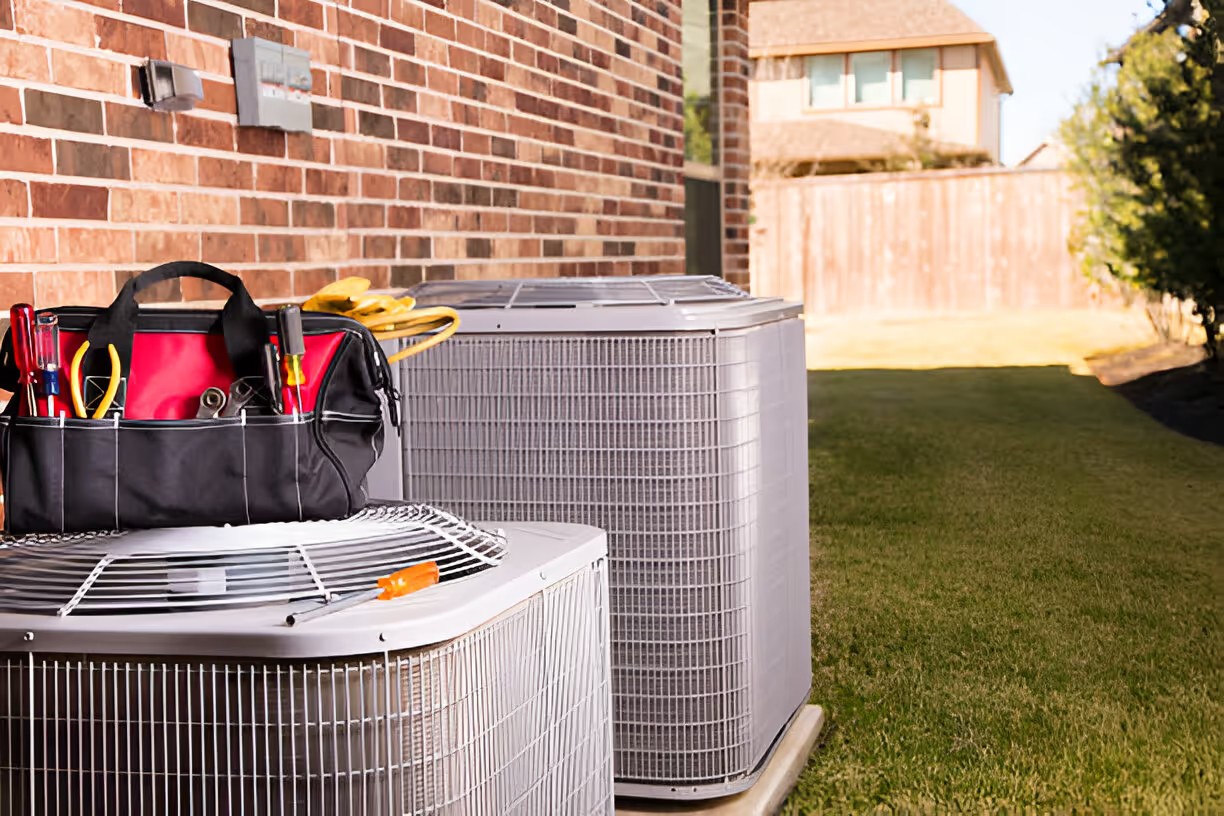Mini Ductless AC in Fountain Hills, AZ
Discover efficient mini ductless AC installation in Fountain Hills, AZ. Learn how zone control, easy retrofits, and reliable heating boost home comfort.
Mini Ductless AC in Fountain Hills, AZ
Mini ductless AC systems, often called ductless mini-splits, are an increasingly popular cooling solution for Fountain Hills, AZ homes. They provide targeted, efficient comfort without the need to run or renovate ductwork. For homeowners dealing with high desert heat, sun‑soaked rooms, or the desire to add conditioned space like a casita or garage conversion, ductless systems deliver reliable cooling while lowering energy loss common with ducted systems.

Why choose ductless cooling in Fountain Hills, AZ
- High efficiency in hot climates: Modern inverter-driven mini splits modulate compressor speed to match cooling demand, which matters in Fountain Hills where summer daytime temperatures regularly climb into the 90s and 100s.
- Zone-by-zone control: Cool only the rooms you use most — bedrooms, living rooms, home offices, or guest suites — reducing wasted energy on unoccupied spaces.
- Easy retrofit and flexible installation: Ideal for older homes or additions where installing ducts would be invasive or expensive.
- Quieter operation and improved indoor air quality: Indoor heads run quietly and built-in filtration reduces dust — helpful with the Sonoran Desert dust and seasonal pollen common in the area.
- Heating capability: Many ductless heat pump models offer efficient heating in cooler months, useful during Fountain Hills’ chilly winter nights without needing a separate furnace.
System components explained
- Outdoor compressor/condenser: The outdoor unit houses the compressor and condenser coil. In Fountain Hills, placement matters to minimize direct sun exposure and ensure adequate airflow around the unit.
- Indoor heads (air handlers): Slim wall-mounted, ceiling cassette, or floor-mounted units distribute conditioned air into individual rooms. Each head contains an evaporator coil, fan, and filters.
- Refrigerant line set: Copper piping connects the indoor heads to the outdoor compressor. Typical installations use up to 25-50 feet of line set per zone; longer runs are possible but affect performance and cost.
- Electrical and control wiring: Power is run to the outdoor unit and a communication/control cable links indoor heads. Many systems include wireless remotes or wall controllers; Wi-Fi enabled models allow smartphone control and scheduling.
- Condensate drain: Indoor heads produce condensate that must be drained either by gravity or a condensate pump for high mounts.
Common mini ductless AC issues in Fountain Hills, AZ
- Reduced airflow or dusty filters: Desert dust and monsoon debris can clog filters quickly. Regular cleaning restores airflow and efficiency.
- Insufficient cooling during heat spikes: Undersized systems or improperly located indoor heads can struggle during extreme summer peaks.
- Freezing coils: Low refrigerant or restricted airflow can cause evaporator freeze-ups.
- Outdoor unit performance loss: Units exposed to continuous sun or blocked by landscaping can overheat and lose efficiency.
- Noise or vibration complaints: Poor mounting or unbalanced fans can create vibration; proper installation minimizes disturbance for neighbors in close lot lines common in some Fountain Hills communities.
Installation considerations specific to Fountain Hills
- Load calculation and right sizing: Accurate Manual J load calculations are essential in the high‑temperature, high‑solar‑gain environment of Fountain Hills. Oversized or undersized systems both reduce comfort and efficiency.
- Orientation and solar load: West and south facing rooms receive heavy late afternoon sun. Strategically placed indoor heads and supplemental shading reduce peak demand.
- Outdoor unit siting: Mount the compressor on shaded concrete pads or vibration isolators, away from landscaped mulch and potential flood zones during monsoon rains. Consider local HOA rules on exterior equipment placement and screening.
- Aesthetic and structural considerations: Line set penetrations are small, but placement should avoid visible runs across prominent walls. Ceiling cassettes or floor units can be used where wall space is limited.
- Permits and code compliance: Most installations require local permits and adherence to electrical and refrigerant codes. Proper permitting ensures safety and long-term system reliability.
Zoning and control options
- Single-zone vs multi-zone systems: Single-zone systems cool one room; multi-zone systems connect several indoor heads to one outdoor compressor for coordinated control and cost efficiency.
- Individual room controls: Each indoor head typically has its own thermostat or remote, allowing tailored setpoints per room.
- Advanced scheduling and smart controls: Wi-Fi enabled systems and smart controllers offer scheduling, energy monitoring, and geofencing to reduce wasted runtime.
- Integration with existing HVAC: Ductless units can complement a central system by taking the load off rooms with extreme solar gain or providing efficient conditioning in additions and converted spaces.
Recommended maintenance to ensure reliable cooling
- Clean or replace filters monthly during heavy use: In Fountain Hills, check filters more often during dust storms and monsoon season.
- Annual professional tune-up: A certified technician should inspect refrigerant charge, electrical connections, condensate drainage, fan motors, and overall system performance before peak season.
- Keep outdoor unit clear: Maintain at least 2 feet of clearance around the condenser, keep it elevated on a level pad, and trim vegetation that can restrict airflow.
- Inspect line set insulation and wall penetrations: UV exposure and temperature swings can degrade insulation; damaged insulation reduces efficiency.
- Monitor for unusual noises or decreased cooling: Early detection of ice, leaks, or odd sounds prevents bigger repairs and extends equipment life.
Benefits of timely investment and upkeep
Choosing a mini ductless AC in Fountain Hills, AZ offers targeted comfort, potential energy savings, and the flexibility to condition spaces where ducts are impractical. When combined with correct sizing, smart zoning, and regular maintenance suited to local dust and heat conditions, ductless systems deliver dependable cooling through intense summer months and efficient heating when temperatures drop. Proper installation and proactive service preserve performance, lower operating costs, and enhance comfort in a desert climate where reliable cooling is essential.






